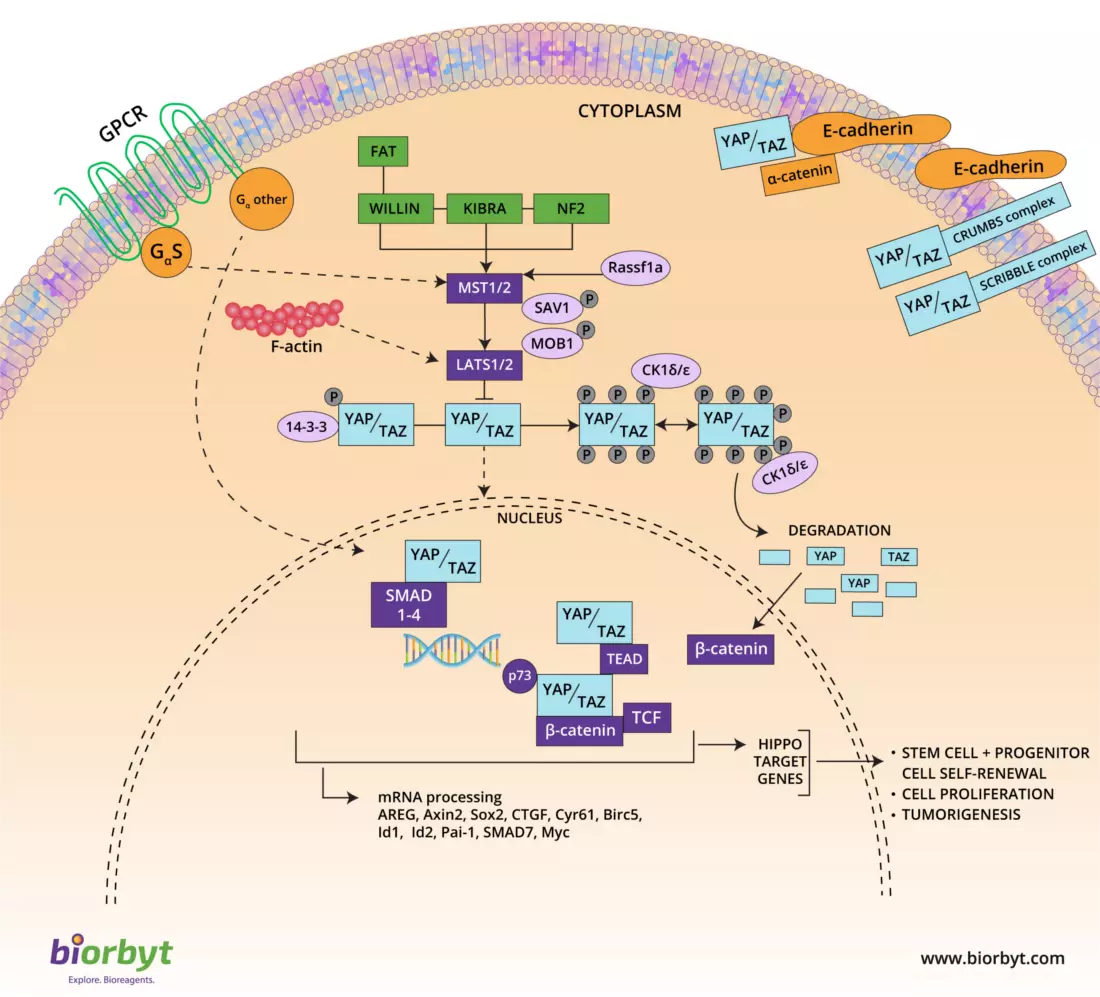You have no items in your shopping cart.
Hippo Signaling Pathway
Hippo pathway was first discovered to be involved in controlling tissue growth in Drosophila melanogaster.
The major functions of the Hippo pathway have been defined to restrict tissue growth in adults and modulate cell proliferation, differentiation, and migration in developing organs. Furthermore, dysregulation of the Hippo pathway leads to aberrant cell growth and neoplasia.

Hippo signalling pathway controls cell proliferation and survival mainly by sensing the physical state of cells within a tissue through several mechanisms. Unlike other pathways, Hippo does not have dedicated extracellular ligand–receptor complexes. Instead, the upstream signaling of Hippo involves many mechanisms and other signaling pathways. These upstream inputs can be divided into those controlling the pathway by retaining YAP/TAZ in the cytoplasm by physical interaction, and those that activate the core kinase complex MST/LATS leading to YAP/TAZ phosphorylation.
The core of Hippo signaling consists of a group of kinases (MST1/2 and LATS1/2) and adaptor proteins SAV1 and MOB1, which by phosphorylating the Hippo pathway effectors YAP and TAZ, retain them in the cytoplasm. In the cytoplasm, YAP/TAZ undergo proteosomal degradation. YAP and TAZ, if not retained in the cytoplasm, can translocate to the nucleus where they regulate the activity of several transcription factors that induce the expression of Hippo target genes involved in cancer development and progression. Upstream regulation of Hippo includes NF2, KIBRA and WILLIN that activate the core kinase complex. Polarization and adhesion proteins like α-catenin, E-cadherin, CRUMBS, and SCRIBBLE complexes sequester YAP/TAZ in the cytoplasm. GPCRs that can be divided in those signaling through GαS leading to activation of Hippo cascade or those signaling through other Gα subunits that prefer YAP/TAZ nuclear translocation. Mechanical stress regulated by F-actin can also increase YAP/TAZ cytoplasmic location. In addition, independent proteins like Rassf1a and several pathways regulate Hippo signaling.
